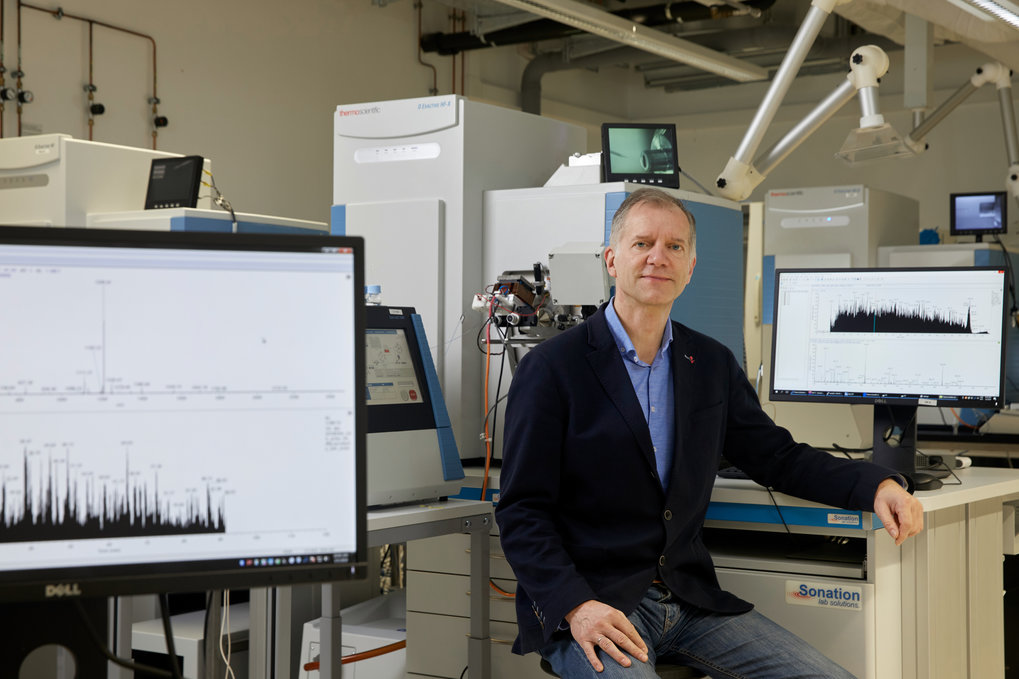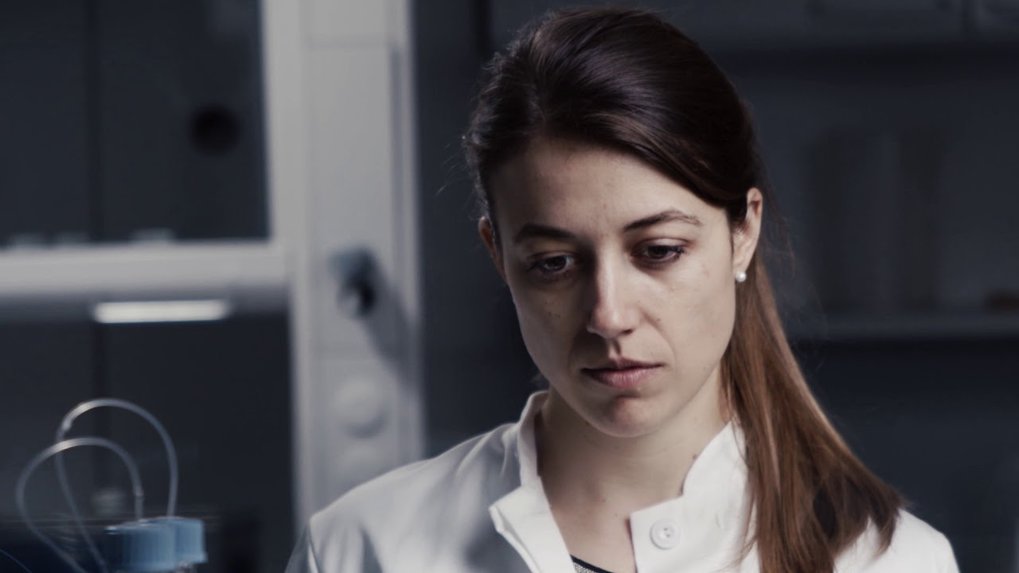The European Patent Office has nominated scientist Matthias Mann from the Max Planck Institute of Biochemistry as one of the three finalists in the field of research. The Inventors' Award is awarded in five categories to individual inventors and teams whose developments contribute to finding technological solutions to the most important challenges of our time. The winners will be awarded on June 20, 2019 in Vienna.

Approximately 12,000 different proteins are produced by a single human body cell, all together producing more than 120,000 different proteins. Proteins are derived from the information encoded in our genes. They give cells and organs structure, can act as signal substances and are involved in the transport of nutrients. They decide what happens in an organism, whether an organism stays healthy or falls ill - they are the decisive players in life.
Matthias Mann and his team have further developed methods that enable them to determine the weight and number of proteins. The data obtained is then used to identify each protein. The researchers use mass spectrometry to do this. This method enables them to capture the entirety of all proteins in a cell - the proteome. But why do the scientists want to know which and how many proteins are in the cells?
Proteins interact with each other and must be in a certain equilibrium with each other. In order to detect deviations between a diseased cell and a healthy cell, the proteins must be quantified more precisely. That is why researchers have been improving mass spectrometric measurements of proteins for years. The data can be used to determine whether the level of a protein is abnormal and whether there is a disease. A disturbed balance is only recognized if the proteins of a healthy and a diseased cell are directly compared. Therefore, the initial samples are labeled differently. Matthias Mann has now been nominated as Inventor of the Year for the patent of the so-called SILAC labeling among othe
New labeling enables rapid protein analysis
SILAC stands for "Stable Isotope Labeling with Amino acids in cell culture". With this method, the researchers introduce the amino acids arginine and lysine into the healthy cells. Amino acids are the basic building blocks of proteins. The special feature is that amino acids with heavy carbon atoms are introduced into the healthy cells. In the diseased cells, only the light carbon atoms are found. Hence, later during the measurement, the proteins in the healthy cells are a little heavier than those of the diseased cells and thus distinguishable from each other and comparable.

Diagnosis of diseases by protein analysis
"Previous methods have not been able to measure proteins on a large scale. It would have taken many days," said Matthias Mann. Now the researchers are able to identify proteins that are present in too high or too low levels compared to healthy cells out of a blood drop or tissue. "We also see what happens to the proteins when cells are treated with drugs. This provides new insights for many known diseases - from cancer to Parkinson's - and can also be used for diagnostics in the future. The developments open up new avenues in personalized medicine," continues Mann.
Matthias Mann and his team have patented many other methods in addition to the SILAC method, such as the software for data analysis. "The patents for key methods also make the new method interesting for companies. It is very important to me that the analytical methods will reach patients directly over the next few years," said Matthias Mann.
Successful three times
Already in 2018, Jens Frahm of the Max Planck Institute for Biophysical Chemistry was honored with the European Inventors' Award for his groundbreaking development in magnetic resonance imaging (MRI). In two steps, he and his team have been able to accelerate MRI up to 10,000x and establish this technology in clinical practice.
In 2017, Axel Ullrich from the Max Planck Institute of Biochemistry was among the finalists for the European Inventors' Award. The work of the molecular biologist led to a quantum leap in the scientific understanding of the genetic and cellular causes of cancer and other diseases. In his four decades of research, Ullrich has pioneered the development of new classes of drugs, including cell growth inhibitors for breast, colon and kidney cancer.
About the European Inventor Award
In 2019, the European Inventors' Award is one of the most recognized prizes for innovation in Europe and will be awarded for the 14th time. It has been awarded annually by the European Patent Office since 2006. To qualify for the award, proposals must meet specific criteria, such as proof of at least one European patent granted for the invention by the European Patent Office.
An independent international jury of high-caliber experts from the fields of business, politics, science and research examines the extent to which the nominated inventors' work has contributed to technical and social progress, prosperity and job creation in Europe.
CM/BA






